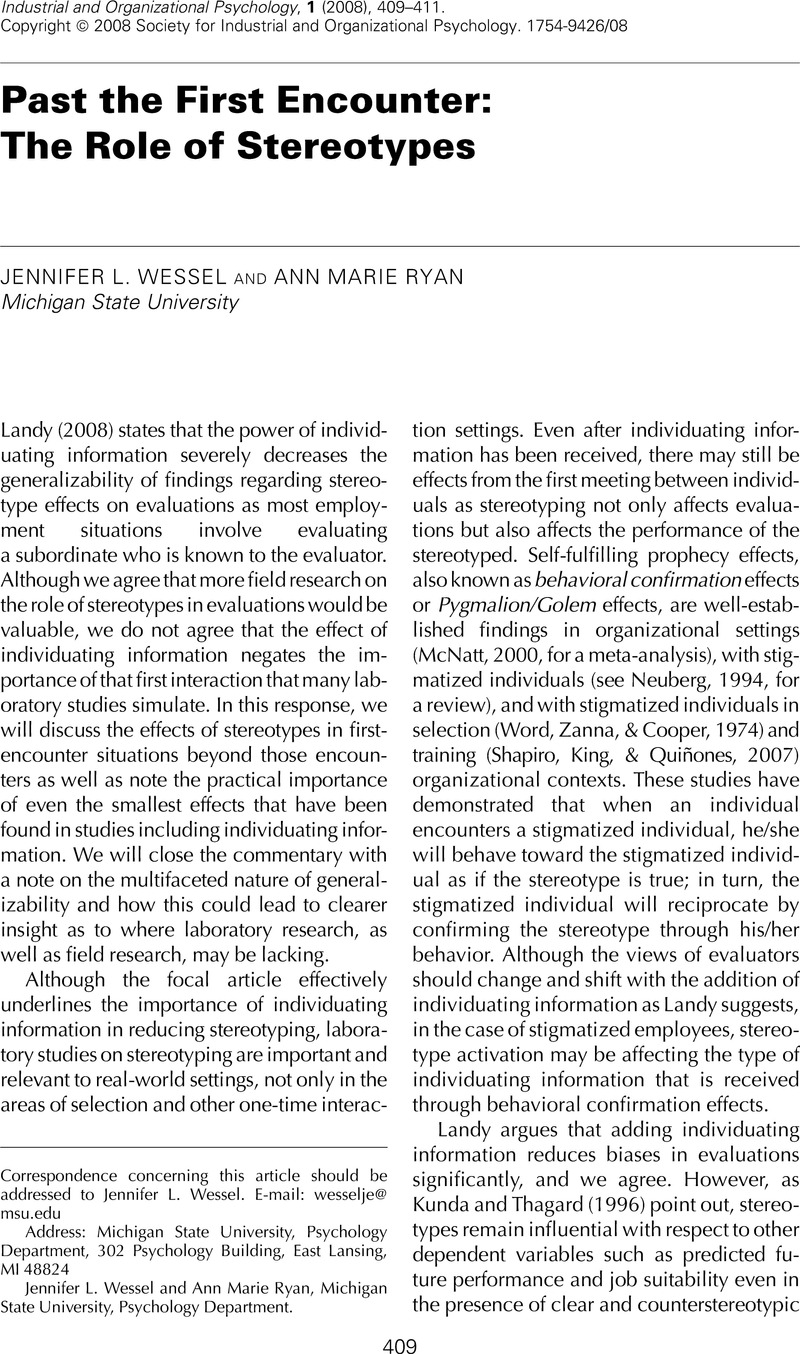Crossref Citations
This article has been cited by the following publications. This list is generated based on data provided by Crossref.
Landy, Frank J.
2008.
Stereotyping, Implicit Association Theory, and Personnel Decisions: I Guess We Will Just Have to Agree to Disagree.
Industrial and Organizational Psychology,
Vol. 1,
Issue. 4,
p.
444.
McCARTHY, JULIE M.
VAN IDDEKINGE, CHAD H.
and
CAMPION, MICHAEL A.
2010.
ARE HIGHLY STRUCTURED JOB INTERVIEWS RESISTANT TO DEMOGRAPHIC SIMILARITY EFFECTS?.
Personnel Psychology,
Vol. 63,
Issue. 2,
p.
325.
Ryan, Ann Marie
and
Powers, Charlotte
2012.
The Oxford Handbook of Personnel Assessment and Selection.
p.
814.
Eichenauer, Connor
and
Ryan, Ann Marie
2024.
Gender and leadership evaluations: what happens if we actually measure expectations–behavior incongruence?.
Gender in Management: An International Journal
,
Vol. 39,
Issue. 5,
p.
664.





